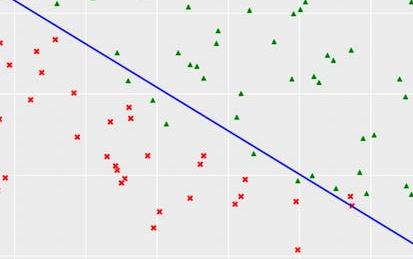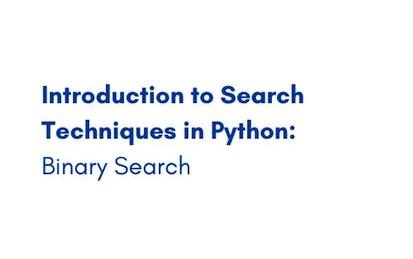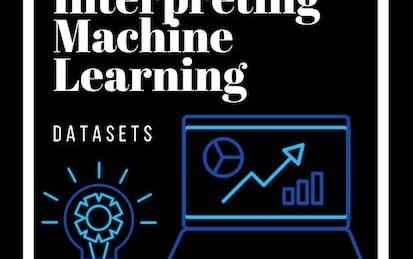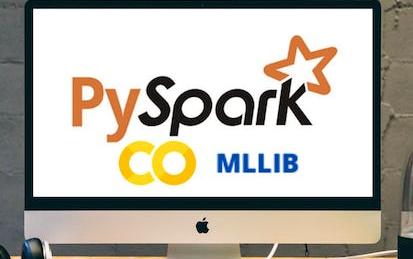

دوراتنا

AI Workflow: Data Analysis and Hypothesis Testing
This is the second course in the IBM AI Enterprise Workflow Certification specialization. You are STRONGLY encouraged to complete these courses in order as they are not individual independent courses, but part of a workflow where each course builds on the previous ones. In this course you will begin your work for a hypothetical streaming media company by doing exploratory data analysis (EDA). Best practices for data visualization, handling missing data, and hypothesis testing will be introduced to you as part of your work. You will learn techniques of estimation
-
Course by

-
 Self Paced
Self Paced
-
 11 ساعات
11 ساعات
-
 الإنجليزية
الإنجليزية

ML Algorithms
ML Algorithms is the fourth Course in the AWS Certified Machine Learning Specialty specialization. This Course enables learners to deep dive Machine Learning Algorithms. This course is divided into two modules and each module is further segmented by Lessons and Video Lectures. This course facilitates learners with approximately 2:00-2:30 Hours Video lectures that provide both Theory and Hands -On knowledge. Also, Graded and Ungraded Quiz are provided with every module in order to test the ability of learners.
-
Course by

-
 Self Paced
Self Paced
-
 5 ساعات
5 ساعات
-
 الإنجليزية
الإنجليزية

Medical Diagnosis using Support Vector Machines
In this one hour long project-based course, you will learn the basics of support vector machines using Python and scikit-learn. The dataset we are going to use comes from the National Institute of Diabetes and Digestive and Kidney Diseases, and contains anonymized diagnostic measurements for a set of female patients. We will train a support vector machine to predict whether a new patient has diabetes based on such measurements. By the end of this course, you will be able to model an existing dataset with the goal of making predictions about new data.
-
Course by

-
 Self Paced
Self Paced
-
 2 ساعات
2 ساعات
-
 الإنجليزية
الإنجليزية

Demand Forecasting Using Time Series
This course is the second in a specialization for Machine Learning for Supply Chain Fundamentals. In this course, we explore all aspects of time series, especially for demand prediction. We'll start by gaining a foothold in the basic concepts surrounding time series, including stationarity, trend (drift), cyclicality, and seasonality. Then, we'll spend some time analyzing correlation methods in relation to time series (autocorrelation). In the 2nd half of the course, we'll focus on methods for demand prediction using time series, such as autoregressive models.
-
Course by

-
 Self Paced
Self Paced
-
 9 ساعات
9 ساعات
-
 الإنجليزية
الإنجليزية

Machine Learning Models in Science
This course is aimed at anyone interested in applying machine learning techniques to scientific problems. In this course, we'll learn about the complete machine learning pipeline, from reading in, cleaning, and transforming data to running basic and advanced machine learning algorithms. We'll start with data preprocessing techniques, such as PCA and LDA. Then, we'll dive into the fundamental AI algorithms: SVMs and K-means clustering. Along the way, we'll build our mathematical and programming toolbox to prepare ourselves to work with more complicated models.
-
Course by

-
 Self Paced
Self Paced
-
 12 ساعات
12 ساعات
-
 الإنجليزية
الإنجليزية

Using SAS Viya REST APIs with Python and R
SAS Viya is an in-memory distributed environment used to analyze big data quickly and efficiently. In this course, you’ll learn how to use the SAS Viya APIs to take control of SAS Cloud Analytic Services from a Jupyter Notebook using R or Python. You’ll learn to upload data into the cloud, analyze data, and create predictive models with SAS Viya using familiar open source functionality via the SWAT package -- the SAS Scripting Wrapper for Analytics Transfer. You’ll learn how to create both machine learning and deep learning models to tackle a variety of data sets and complex problems.
-
Course by

-
 Self Paced
Self Paced
-
 18 ساعات
18 ساعات
-
 الإنجليزية
الإنجليزية

Machine Learning Algorithms: Supervised Learning Tip to Tail
This course takes you from understanding the fundamentals of a machine learning project. Learners will understand and implement supervised learning techniques on real case studies to analyze business case scenarios where decision trees, k-nearest neighbours and support vector machines are optimally used.
-
Course by

-
 Self Paced
Self Paced
-
 9 ساعات
9 ساعات
-
 الإنجليزية
الإنجليزية

Computer Vision in Microsoft Azure
In Microsoft Azure, the Computer Vision cognitive service uses pre-trained models to analyze images, enabling software developers to easily build applications"see" the world and make sense of it. This ability to process images is the key to creating software that can emulate human visual perception. In this course, you'll explore some of these capabilities as you learn how to use the Computer Vision service to analyze images. This course will help you prepare for Exam AI-900: Microsoft Azure AI Fundamentals.
-
Course by

-
 Self Paced
Self Paced
-
 8 ساعات
8 ساعات
-
 الإنجليزية
الإنجليزية

Optimizing Machine Learning Performance
This course synthesizes everything your have learned in the applied machine learning specialization. You will now walk through a complete machine learning project to prepare a machine learning maintenance roadmap. You will understand and analyze how to deal with changing data. You will also be able to identify and interpret potential unintended effects in your project. You will understand and define procedures to operationalize and maintain your applied machine learning model.
-
Course by

-
 Self Paced
Self Paced
-
 12 ساعات
12 ساعات
-
 الإنجليزية
الإنجليزية

Introduction to the Tidyverse
This course introduces a powerful set of data science tools known as the Tidyverse. The Tidyverse has revolutionized the way in which data scientists do almost every aspect of their job. We will cover the simple idea of "tidy data" and how this idea serves to organize data for analysis and modeling. We will also cover how non-tidy can be transformed to tidy data, the data science project life cycle, and the ecosystem of Tidyverse R packages that can be used to execute a data science project.
-
Course by

-
 Self Paced
Self Paced
-
 الإنجليزية
الإنجليزية

Logistic Regression with NumPy and Python
Welcome to this project-based course on Logistic with NumPy and Python. In this project, you will do all the machine learning without using any of the popular machine learning libraries such as scikit-learn and statsmodels. The aim of this project and is to implement all the machinery, including gradient descent, cost function, and logistic regression, of the various learning algorithms yourself, so you have a deeper understanding of the fundamentals.
-
Course by

-
 Self Paced
Self Paced
-
 2 ساعات
2 ساعات
-
 الإنجليزية
الإنجليزية

Google Advanced Data Analytics Capstone
You’re almost there! This is the seventh and final course of the Google Advanced Data Analytics Certificate. In this course, you have the opportunity to complete an optional capstone project that includes key concepts from each of the six preceding courses.
-
Course by

-
 Self Paced
Self Paced
-
 10 ساعات
10 ساعات
-
 الإنجليزية
الإنجليزية

Politics and Ethics of Data Analytics in the Public Sector
Deepen your understanding of the power and politics of data in the public sector, including how values — in addition to data and evidence — are always part of public sector decision-making. In this course, you will explore common ethical challenges associated with data, data analytics, and randomized controlled trials in the public sector. You will also navigate and understand the ethical issues related to data systems and data analysis by understanding frameworks, codes of ethics, and professional guidelines.
-
Course by

-
 Self Paced
Self Paced
-
 14 ساعات
14 ساعات
-
 الإنجليزية
الإنجليزية

Introduction to High-Performance and Parallel Computing
This course introduces the fundamentals of high-performance and parallel computing. It is targeted to scientists, engineers, scholars, really everyone seeking to develop the software skills necessary for work in parallel software environments. These skills include big-data analysis, machine learning, parallel programming, and optimization. We will cover the basics of Linux environments and bash scripting all the way to high throughput computing and parallelizing code. We recommend you are familiar with either Fortran 90, C++, or Python to complete some of the programming assignments.
-
Course by

-
 Self Paced
Self Paced
-
 14 ساعات
14 ساعات
-
 الإنجليزية
الإنجليزية

Medical Insurance Premium Prediction with Machine Learning
In this 1-hour long project-based course, you will learn how to predict medical insurance cost with machine learning. The objective of this case study is to predict the health insurance cost incurred by Individuals based on their age, gender, Body Mass Index (BMI), number of children, smoking habits, and geo-location. Note: This course works best for learners who are based in the North America region. We’re currently working on providing the same experience in other regions.
-
Course by

-
 Self Paced
Self Paced
-
 2 ساعات
2 ساعات
-
 الإنجليزية
الإنجليزية

Computational Social Science Methods
This course gives you an overview of the current opportunities and the omnipresent reach of computational social science. The results are all around us, every day, reaching from the services provided by the world’s most valuable companies, over the hidden influence of governmental agencies, to the power of social and political movements. All of them study human behavior in order to shape it. In short, all of them do social science by computational means. In this course we answer three questions: I. Why Computational Social Science (CSS) now? II. What does CSS cover? III.
-
Course by

-
 Self Paced
Self Paced
-
 11 ساعات
11 ساعات
-
 الإنجليزية
الإنجليزية

Introduction to Search Techniques in Python: Binary Search
By the end of this project, you will be able to code the binary search technique using Python programming language. Throughout the tasks, you will be able to identify and apply the basic skills needed for every programming language such as lists, functions, recursion and if conditions. Each part of this project will prepare you to code on your own in Python language, whether to work on search techniques or simple coding
-
Course by

-
 Self Paced
Self Paced
-
 2 ساعات
2 ساعات
-
 الإنجليزية
الإنجليزية

Mathematics for Machine Learning: PCA
This intermediate-level course introduces the mathematical foundations to derive Principal Component Analysis (PCA), a fundamental dimensionality reduction technique. We'll cover some basic statistics of data sets, such as mean values and variances, we'll compute distances and angles between vectors using inner products and derive orthogonal projections of data onto lower-dimensional subspaces.
-
Course by

-
 Self Paced
Self Paced
-
 21 ساعات
21 ساعات
-
 الإنجليزية
الإنجليزية

What is Data Science?
Do you want to know why data science has been labeled the sexiest profession of the 21st century? After taking this course, you will be able to answer this question, understand what data science is and what data scientists do, and learn about career paths in the field. The art of uncovering insights and trends in data has been around since ancient times. The ancient Egyptians used census data to increase efficiency in tax collection and accurately predicted the Nile River's flooding every year. Since then, people have continued to use data to derive insights and predict outcomes.
-
Course by

-
 Self Paced
Self Paced
-
 19 ساعات
19 ساعات
-
 الإنجليزية
الإنجليزية

Interpreting Machine Learning datasets
In this 2-hour long project-based course, you will learn how to interpret the dataset for machine learning, how different features impact on a mode and how to evaluate them.
-
Course by

-
 Self Paced
Self Paced
-
 2 ساعات
2 ساعات
-
 الإنجليزية
الإنجليزية

Predicting the Weather with Artificial Neural Networks
In this one hour long project-based course, you will tackle a real-world prediction problem using machine learning. The dataset we are going to use comes from the Australian government. They recorded daily weather observations from a number of Australian weather stations. We will use this data to train an artificial neural network to predict whether it will rain tomorrow.
By the end of this project, you will have created a machine learning model using industry standard tools, including Python and sklearn.
-
Course by

-
 Self Paced
Self Paced
-
 2 ساعات
2 ساعات
-
 الإنجليزية
الإنجليزية

AI For Everyone
AI is not only for engineers. If you want your organization to become better at using AI, this is the course to tell everyone--especially your non-technical colleagues--to take.
-
Course by

-
 Self Paced
Self Paced
-
 11 ساعات
11 ساعات
-
 الإنجليزية
الإنجليزية

Diabetes Prediction With Pyspark MLLIB
In this 1 hour long project-based course, you will learn to build a logistic regression model using Pyspark MLLIB to classify patients as either diabetic or non-diabetic. We will use the popular Pima Indian Diabetes data set. Our goal is to use a simple logistic regression classifier from the pyspark Machine learning library for diabetes classification. We will be carrying out the entire project on the Google Colab environment with the installation of Pyspark.You will need a free Gmail account to complete this project.
-
Course by

-
 Self Paced
Self Paced
-
 3 ساعات
3 ساعات
-
 الإنجليزية
الإنجليزية

Follow a Machine Learning Workflow
Machine learning is not just a single task or even a small group of tasks; it is an entire process, one that practitioners must follow from beginning to end. It is this process—also called a workflow—that enables the organization to get the most useful results out of their machine learning technologies. No matter what form the final product or service takes, leveraging the workflow is key to the success of the business's AI solution.
-
Course by

-
 Self Paced
Self Paced
-
 20 ساعات
20 ساعات
-
 الإنجليزية
الإنجليزية

Unsupervised Learning, Recommenders, Reinforcement Learning
In the third course of the Machine Learning Specialization, you will: • Use unsupervised learning techniques for unsupervised learning: including clustering and anomaly detection. • Build recommender systems with a collaborative filtering approach and a content-based deep learning method. • Build a deep reinforcement learning model. The Machine Learning Specialization is a foundational online program created in collaboration between DeepLearning.AI and Stanford Online.
-
Course by

-
 Self Paced
Self Paced
-
 28 ساعات
28 ساعات
-
 الإنجليزية
الإنجليزية



